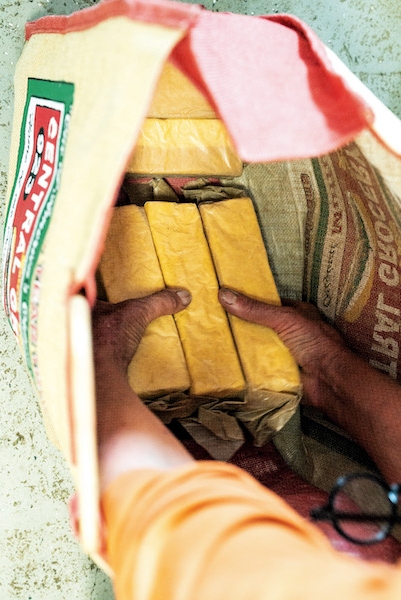Edible Gold
When Sustainable Settings got two cows and started its dairy in 2009, it would be a while before its milk-share program got up and running. So, plenty of milk was available to experiment with making dairy products for on-ranch consumption, says Brook LeVan, co-founder and executive director of the nonprofit regenerative farm and whole-systems learning and research center.
Many years later, with the raw milk program going strong, the occasional surplus milk is prized, not necessarily for the rich crème fraiche or delectable cheeses that can be fashioned from it, but for what LeVan and many others consider edible gold: raw butter.
“Heaven on your spoon” is how LeVan describes the taste of the unpasteurized, unhomogenized butter mastered by his wife, Rose (Sustainable Settings’ other co-founder and self-described milk maid). But the benefits of this butter—made from A2 milk that comes from 100 percent grass-fed cows on a biodynamic farm with regenerative soil practices and nutritious hay—go far beyond taste. And they’ve taken quite some time to realize.
“It took us 20 years to make this pound of butter,” LeVan writes in a draft of his upcoming book. “It actually took our whole lives … to just participate in the co-creation of this pound of butter. … Somewhere along the line we had to let go of many things we were taught and to find out for ourselves what was true for us.”
This is what the LeVans have found.
It all starts with healthy soil, LeVan explains, where plant roots soak up vitamins and minerals that eventually make their way to the grazer. Not tilling the soil and other regenerative practices encourage the greatest diversity of nutrients to get transferred to the grazer—and through its milk products to humans. (Sustainable Settings’ hay has tested very high for nutrients, LeVan says.)
Raw butter—especially from grass-fed cows—is a far superior source of nutrients, including vitamins A, D, and E, according to LeVan and other raw dairy proponents. Pasteurization, a process of heating milk to destroy microbes and extend shelf life, they say, kills not only bad bacteria but also good bacteria and enzymes that facilitate various functions of the human body including digestion, absorbing some essential vitamins, and boosting the immune system.
Another health benefit of milk products from Sustainable Settings and others that focus on raw and grass-fed dairy is the A2 beta-casein protein, which is a matter of genetics. Breeds that have a higher chance of producing A1 proteins, like Holsteins, are favored by the mass-market dairy industry because they produce more milk. Cows with an A2 propensity, like Guernseys and Jerseys, may produce less milk, but it’s higher quality.
“A2 genetics is highly beneficial to us, as it cleans our pipes and builds our bones,” says LeVan, adding that A1 milk does the opposite. It is also suggested that A2 milk helps digestion, and that populations who drink it have lower rates of cardiovascular disease and diabetes.
LeVan even tells of naturopath doctors in England prescribing pure raw butter to help people with vitamin D and K immune deficiencies. He jokes that since he himself began consuming raw milk products after starting the dairy at Sustainable Setting, “I only age nine months of the year.”
The FDA and much of the modern medical industry focus only on the risks of raw dairy products, and it’s true that you can get sick from harmful bacteria that’s more likely to be found in unpasteurized milk. The health information website Healthline cites a statistic that 82 percent of all dairy-related illness outbreaks were from raw milk. It’s for these reasons that 20 states ban consumption of raw milk; in Colorado you can only get it by buying a share in a herd, like at Sustainable Settings. Raw-butter advocates claim that pathogens are much less likely to develop in butter, which is not liquid, than in milk.
But as with many natural foods, there’s little in the way of scientific studies that handily prove either position. Research is not at all robust enough into less visible preventive health measures—like consuming foods high in nutrients and beneficial bacteria—which natural food proponents say outweigh the smaller risk of getting a passing illness.
It’s important to look at this whole picture, says LeVan, who along with other raw-dairy advocates has seen plenty of evidence of its benefits.
“The family milk cow used to be a common thing, and when we lost touch with that we lost touch with many forms of nourishment,” says LeVan. “The real solution is our relationship to the soil, and getting back to real food and nutrient density. No one can make a tomato—we can only help co-create flavor, and flavor is this brilliant moment, this fragile elegance that occurs when all these elements to come together.”





